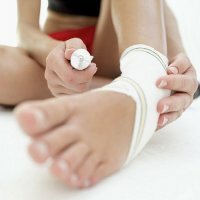Dysplasia of joints in children: symptoms, causes of development, diagnosis and treatment
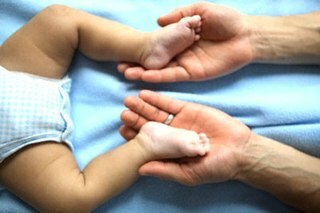
In 3 out of 1,000 newborns, joint dysplasia is diagnosed - a disease associated with a violation of their innate nature.Most often such damage is suffered the largest joints in the human body - hip, the consequences of violations of their functions can be very serious and lead even to people with disabilities.Therefore, it is important to diagnose the disease in time and start treatment until the development of irreversible processes.
Table of contents:Causes of hip dysplasia in children
In medicine, there are three main reasons for the development of this hip joint pathology:
- genetic predisposition;
- disturbances in the formation of tissues during intrauterine development of the fetus;
- hormonal effect.
Heredity

According to statistics, dysplasia of the hip joint( dysplasia of TBS) is diagnosed in 25% of cases in children whose parents have the same history in the anamnesis.Quite often, the disease under consideration is diagnosed simultaneously with myelodysplasia - a violation in the process of formation of blood cells in the red bone marrow.Doctors associate such a violation directly with hip dysplasia.
Hormonal effect
This is an unstable hormonal background of a pregnant woman - the body has a high level of progesterone.This hormone has a relaxing effect on ligaments, joints and cartilage - this is necessary for labor and delivery.But the "trick" is that progesterone has a high placental permeability and falls into the fetal bloodstream - this provokes softening of the ligamentous apparatus of the unborn child.
Note: , this negative effect of the hormone progesterone has a particular intensity in case of an inappropriate position of the fetus or delivery in the breech presentation.
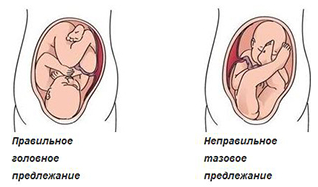
Inadequate formation of tissues in the fetus
The hip joint is observed already at the 6-week age of the fetus, the first child will make the first movements at the 10th week of its intrauterine development.And if at these stages the negative / harmful factors affect the pregnant( and therefore the fetus), the probability of developing hip dysplasia increases severalfold. To such harmful factors may include:
- various chemical substances, this includes certain drugs;
- disadvantaged ecological situation;
- radioactive exposure.
Note: plays the most important role in the formation of tissues in the fetus due to viral diseases - if a woman has recovered in such a trimester of pregnancy, the risk of having a child with hip dysplasia increases dramatically.
In addition, the disease under consideration is diagnosed in the following cases:
- the fruit is too large;
- the mother is diagnosed with water retention;
- fetal presentation of the pelvic;
- diseases of a gynecological mother - for example, myoma, adhesive processes and others.
Classification of hip dysplasia
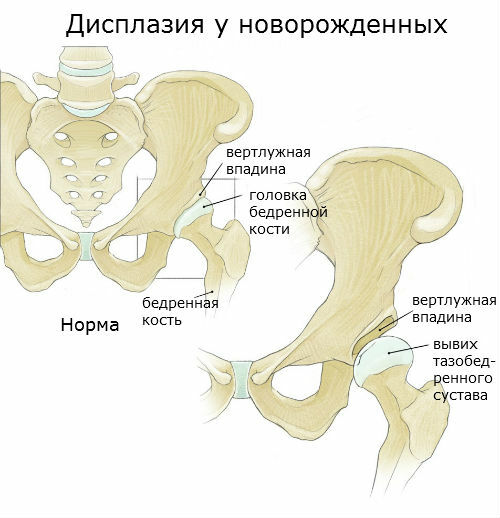
There are three degrees of development of the disease under consideration, for each of them there are certain symptoms.
1 degree - immaturity of the components of the joint tissues
Most often observed in the case of the birth of a premature baby, doctors give it a definition as a transient condition between a healthy and aching joint.
Often, 1 degree of hip dysplasia is diagnosed in fully full-term children, but those born with low weight.This happens if the mother had a feto-placental insufficiency in the period of bearing the child.
2nd degree - prefixed hip
Doctors note a change in the shape of the acetabulum, but the actual femur does not leave the cavity, remains within it.There are no pathological changes in the anatomical structure of the acetabulum.
3 degree - subluxation of the hip joint
This stage of dysplasia of the hip joint already changes the shape of the head of the femur, it moves freely inside the joint, but it does not go beyond it.
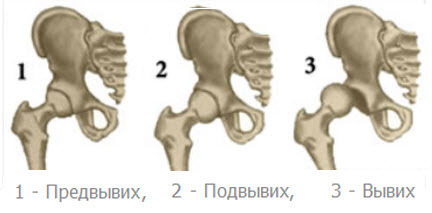
Very important: the most serious option is a dislocation of the hip joint, which is characterized by:
- gross violation of the anatomical structure of the joint;
- changes are observed in the ligaments, and in the muscles, and in the joint bag;
- the head of the thigh extends beyond the articular cavity and lies either on the side or behind it.
Most often, the disease is diagnosed in girls, and, in the first year of life.
Symptoms of hip dysplasia
Symptoms of hip dysplasia can be divided into two large groups:
- characteristic clinical picture in children of the first year of life;
- symptoms are characteristic of children over the age of 12 months.
Clinical picture in newborns
It is very difficult to diagnose 1 and 2 degrees of dysplasia of the hip joint - there are no obvious signs, attention can be paid to the manifestations of a pediatrician or orthopedist during a preventive examination.But parents themselves must closely monitor the appearance and behavior of the newborn. The following factors should be alerted:
- asymmetrical location of folds on buttocks and popliteal cavities;
- to bend the legs, bent in the knees, is problematic;
- the child shows obvious discontent, loudly cries at breeding legs with bent knees.
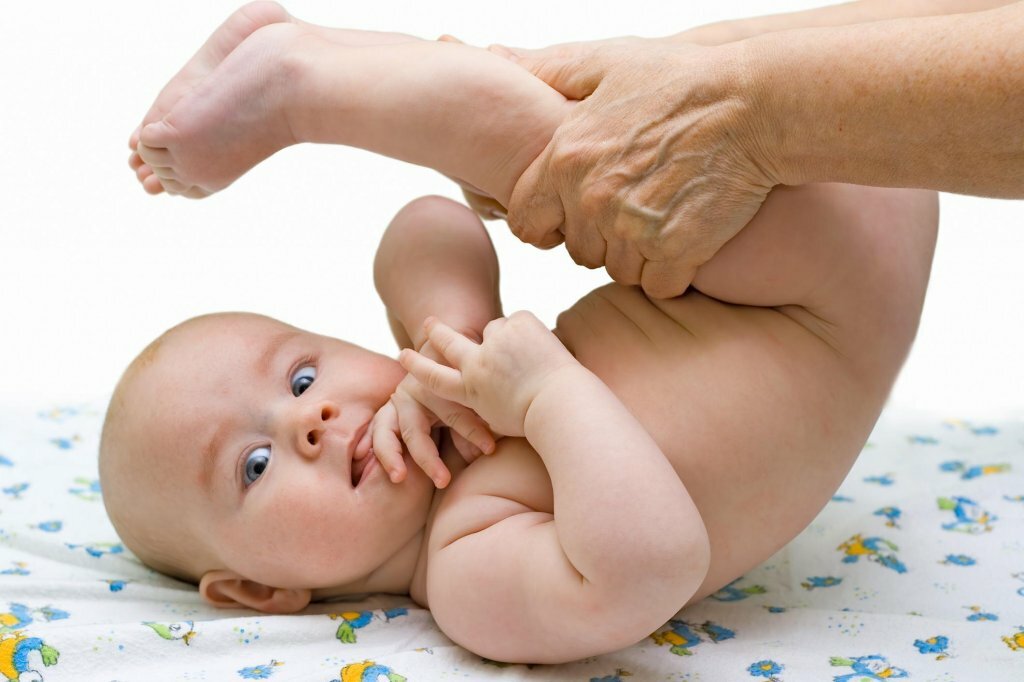 With these signs, parents should visit a doctor and undergo a complete examination with an orthopedic surgeon.The specialist will definitely appoint an ultrasound examination of the hip joint, which will help to identify later the ossification of the head of the femur.In some cases, it is advisable to conduct an X-ray examination - the image will clearly show the sloping of the outer edge of the acetabulum and the flattening of its roof.
With these signs, parents should visit a doctor and undergo a complete examination with an orthopedic surgeon.The specialist will definitely appoint an ultrasound examination of the hip joint, which will help to identify later the ossification of the head of the femur.In some cases, it is advisable to conduct an X-ray examination - the image will clearly show the sloping of the outer edge of the acetabulum and the flattening of its roof.
Much more intensely manifested dysplasia of the hip joint in 3 degrees of flow and with a dislocation. In these cases, the following characteristics will be present:
- Symptom "click".This sound is heard when the doctor or parent starts to bend the legs, bent at the knees, to the sides - the head of the femur at this moment begins to enter the articular cavity and does it with a characteristic click.When the reverse movement is heard the same sound - the head of the femur again goes beyond the articular cavity.
- Skin fold asymmetry.This symptom is checked in the child in the supine position and lying on his back.Pay attention is not on the number of folds( it varies even in healthy children), but at their depth and height of location.
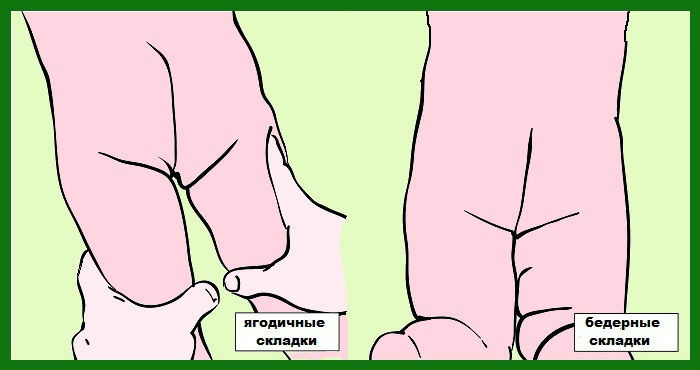
- The legs are bent to the sides with a restriction.It is this symptom that allows diagnosing hip dysplasia in newborns in the first 5-7 days of life with a confidence of 100%.Adhere to the following indicator: if the limitation reaches 50%, then the disease in question is accurately present.
- Shortening of the legs is of a relative nature.Check this symptom as follows: put the baby on the back, bend the legs in the knees and set them in stops to the table / sofa.In a healthy baby, the knees will be on the same level, if one knee is clearly higher than the other, then this means the presence of a shortening of the leg.
- The symptom of Erlacher.His doctors determine by bringing the newborn's straightened leg to the other leg, then try to get the test limb for the other( fold the legs crosswise).In a healthy newborn, the crossing of the legs occurs in the middle or lower part of the thigh, with dysplasia of the hip joint, this phenomenon is observed in the upper third of the thigh.
In case of a congenital dislocation of the hip, the outstretched leg will be observed( unnaturally).This is determined when the newborn is lying on the back with a straightened leg in both the hip and knee joints.
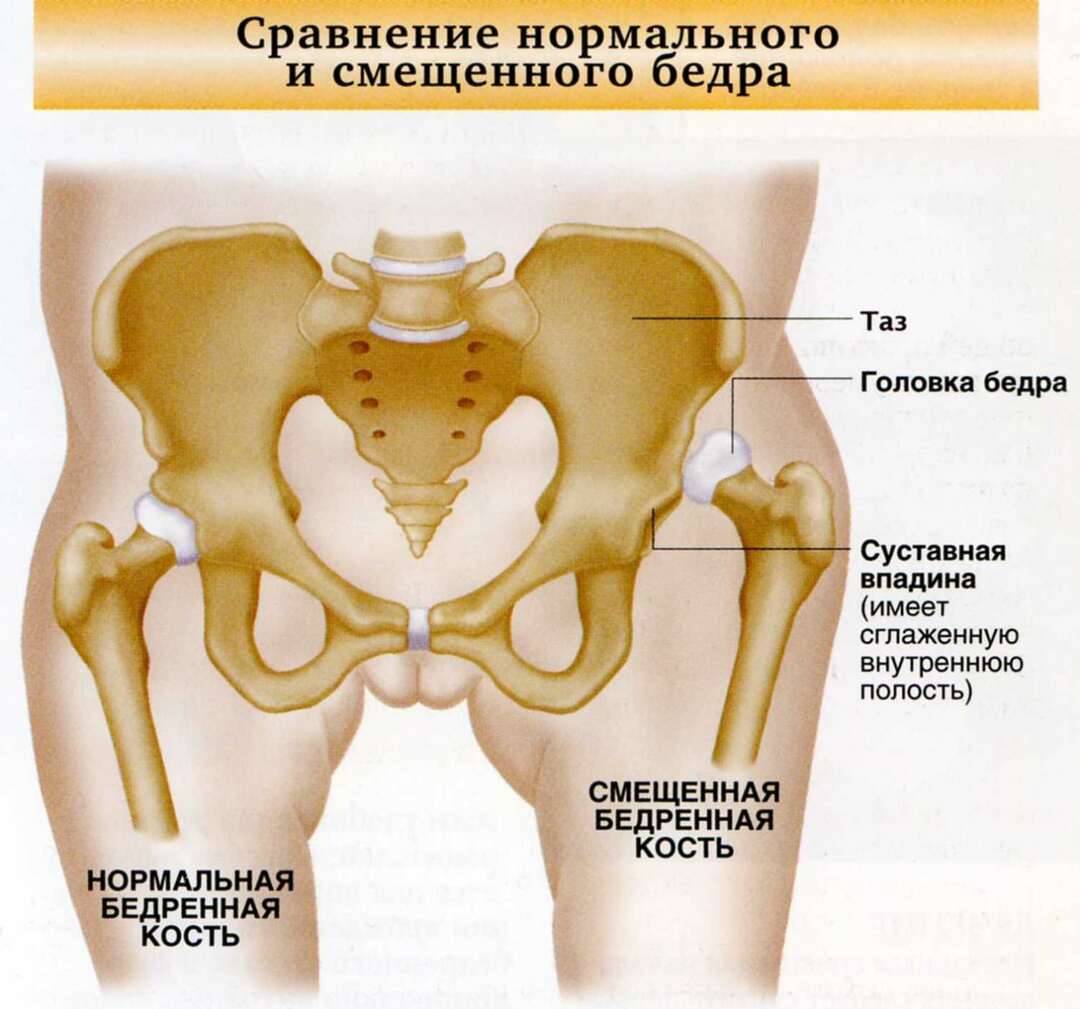
Symptoms of hip dysplasia in children older than 12 months
It is very easy to detect the disease in children over 1 year old - a characteristic sign is a violation of the gait: the child limps on one leg, if the dysplasia of the hip develops on the one hand, or has a "duck" gait in the case of pathology on both sides.
In addition, small forms of the gluteal muscles from the affected side will be noted, and if you press on the heel bone, the mobility will be noticeable from the foot to the femur( the child must lie on its back with its legs straightened).
Methods for treating dysplasia of TDS
Once the diagnosis of hip dysplasia has been diagnosed, treatment should be started immediately - this will be a guarantee of recovery.
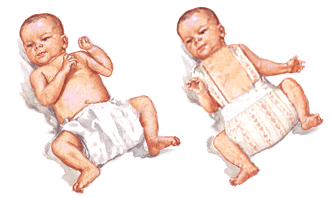 In the first month after birth, doctors appoint a wide swaddling for the child.It is done in the following way: the usual flannel diaper is folded by a rectangle 15 cm wide( approximately, + 2 cm is allowed), it is laid between the legs of the child, which are bent in the knees and spread apart 60-80 degrees.The edges of the diaper reach the knees, the bandages are fixed on the shoulders of the baby.
In the first month after birth, doctors appoint a wide swaddling for the child.It is done in the following way: the usual flannel diaper is folded by a rectangle 15 cm wide( approximately, + 2 cm is allowed), it is laid between the legs of the child, which are bent in the knees and spread apart 60-80 degrees.The edges of the diaper reach the knees, the bandages are fixed on the shoulders of the baby.
Note: newborn quickly adapts to this kind of swaddling, does not act up and calmly transfers the moments of "packing" the legs into the desired position.After a while the child himself starts to put the legs in the right position before changing, but you will need to have patience - at first it will be difficult to calm the child.
Wide swaddling is almost always combined with curative gymnastics - it is elementary: with each change of diaper or regular changing, it is necessary to slowly plant the legs aside and return them to the place.Effective will be swimming on the stomach.
Any procedure for the diagnosis of hip dysplasia can only be prescribed by a specialist!Therapeutic gymnastics is first conducted several times by a medical worker, and parents learn how to do the procedure correctly.
An orthopedic physician( or pediatrician) monitors the child's condition dynamically, and if no positive shifts are observed, specific orthopedic adaptations can be prescribed. These include:
- The Freyka pillow is a plastic panty that constantly supports the baby's legs in a "frog" position, most often assigned to patients aged 1 to 9 months with a mandatory replacement as the baby grows;
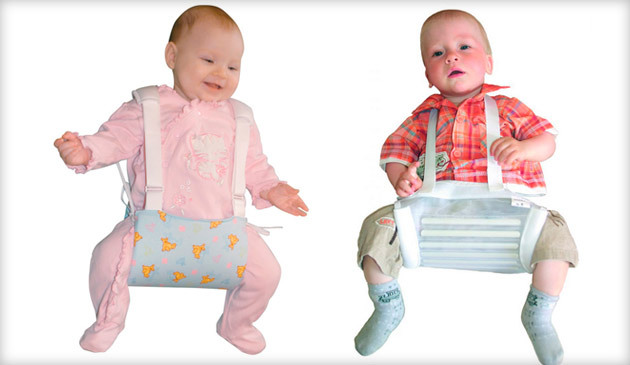
- Pavlik stirrups - the most convenient device for both the child and his parents, it is advisable to wear such a device at the age of 3 weeks to 9 months;
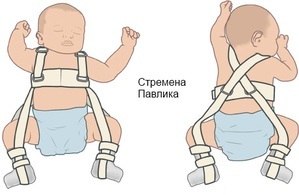
- tire struts - these include a tire with femoral tutors, a tire with popliteal tutors, a tire for walking.
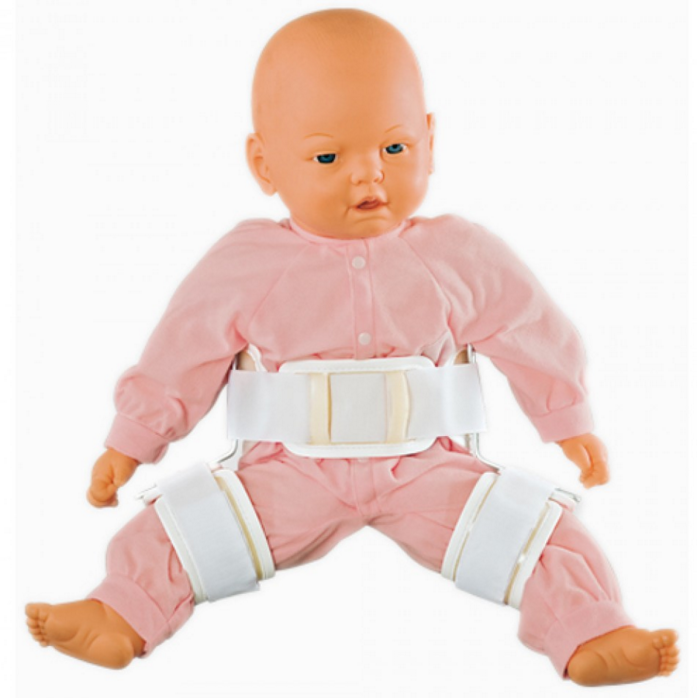
Treatment with specific orthopedic devices is aimed at fixing the child's hip joints in the correct position of the legs.
The doctor appoints the device as the child grows and develops physically:
- from 1 month to 6 months - it is advisable to apply Pavlik's stirrups, in some cases, an effective tire with popliteal tutors;
- from 6 to 8 months the doctor appoints a tire with femoral tutors;
- at the age of 8 months and up to 12 months, if in the future the child is allowed to walk, the child should wear the outgoing tire for walking.
Specific orthopedic appliances must be worn daily, so parents are always concerned about the care of the child in this position. To simplify your work, remember the following rules:
- At the time of changing the diaper, you can not lift the baby by the legs - you need to get your hand under the buttocks and gently lift them.
- In order to change the girdle, there is no need to remove the orthopedic device - just unbind the ties on the shoulders.
- Top on the tires / stirrups you can wear suits, dresses, vests and any clothes.
- If the doctor has appointed wearing the tires, then prepare for a more infrequent bathing of the child: 3 times a day parents should inspect the skin of the baby under the belts and garters to avoid the appearance of irritation on the skin, diaper rash.Instead of bathing, you can use regular wiping with rags soaked in warm water.If necessary, completely wash the child can unfasten one strap, but hold the foot in the desired position during the hygienic procedure, and then identically wash the other side of the trunk.
- Constantly monitor the condition of the tire itself - it should not be wet, and under its belt / strap should not get talcum powder, baby powder or cream, as this can cause irritation of the skin.
Note: , during the feeding of the baby, the mother must ensure that the legs do not have a hip to each other, if this process is performed without specific orthopedic devices.
The duration of wearing such support devices is quite long, so parents should have patience, be ready for moods and excessive anxiety of the baby and in no case be cowed!The option "let the child rest from these terrible tires" and "nothing terrible in 30-60 minutes will not happen" can result in disability in the future.
Drawing attention to the dynamics of the disease under consideration, seeing the results of wearing specific orthopedic adaptations, the doctor can prescribe therapeutic gymnastics and massage.
In no case can you independently carry out such procedures - it can significantly worsen the health of the baby.Only a specialist who keeps a close eye on a small patient can give some recommendations.
Medical gymnastics for dysplasia of the hip joints
If such procedure is prescribed, the parents of the child with a diagnosis of hip dysplasia should attend several sessions with the physiotherapist - the specialist will show how to do the exercises correctly and give a specific schedule of classes. There is a general description of the exercises:
- The child lies on the back, the parents lift the legs of the baby one by one, while bending the knee and hip joints.
- The baby remains lying on his back, and the parent bends his legs in the knee joints and hip joints, without lifting them above the surface.Then you need to dilute the baby's legs moderately, giving a minimal load, as well as making rotational movements of the hips.
- In the same initial position, the legs of the child, bent at the knees and hip joints, maximally dilate to the sides, trying to approach the surface of the table with knees.
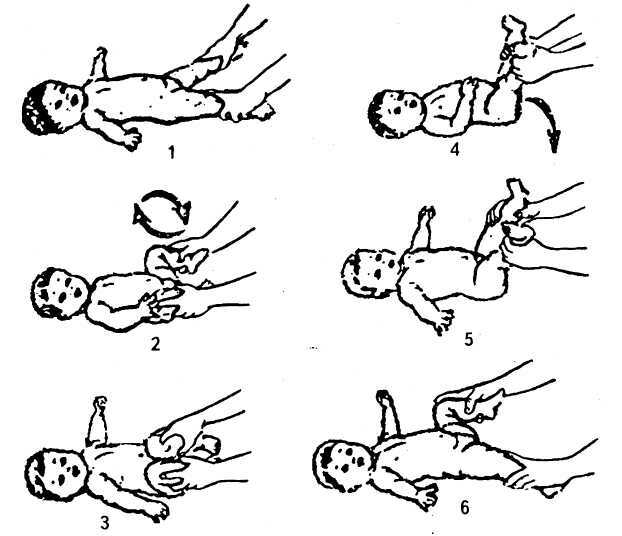
Note: , each of the exercises described should be performed at least 8-10 times, and at the day of such "approaches" it is necessary to make at least 3.
More complete information on the diagnosis of dysplasia and exercises for dysplasia of the hipThe joint of the child you get by viewing this video review:
Massage for newborns with dysplasia of the hip joints
About the massage, we can say the following:
- despite the fact that for newborns and children in theUp to 12 months it is conducted in a sparing mode, the benefit from it is huge - the disease under consideration is quite real cure;
- if you do the recommended exercises with a frequency prescribed by a specialist, then the first results can be noticed after a month of such treatment;
- massage in itself is unlikely to have any positive impact on the health of the child - it is important to carry out complex therapy.
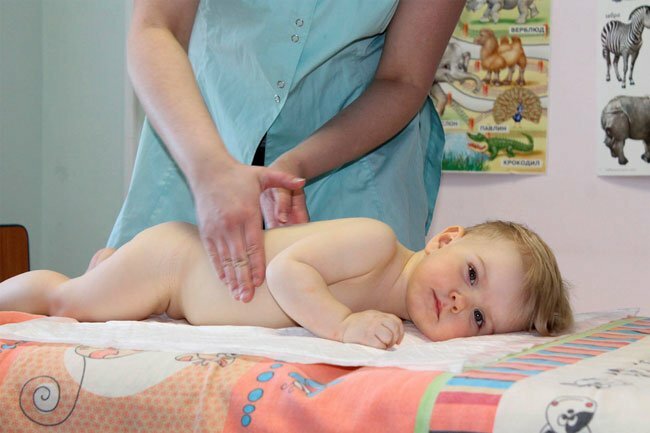
The rules of the massage for dysplasia of the hip formulations will be told by the physician, and the physiotherapist will show and teach the parents to perform all the procedures correctly. Recommended set of massage exercises:
- The kid lies on the back, the parent strokes his feet, hips, kneecaps, hands and stomach.Then the child needs to be turned over on a stomach and just by soft strokes to warm up all the body.Do not forget to "work" and on the inside of the legs, especially the hips - for easy access to these places you just need to push the baby's legs apart.
- The child lies on his stomach, and the parent strokes / rubs the waist, smoothly turning to the buttocks, at the end we perform soft titrations of the gluteal muscles.
- We turn the child back and begin to work on the muscles of the hips - we stroke the legs, shake, gently pinch.In no case can you make any effort in carrying out this part of the massage - the muscles of the thigh can be drastically reduced( spasmodic), which will provoke severe pain.After rubbing and loosening the muscles, it is possible to start flexing / unbending the legs in the knee and hip joints, but only within the limits indicated by the orthopedist.
- Rotation of the hip inwards - the parent should fix the hip with his hand, the second - grasp the knee and rotate the thigh to the inside with a slight pressure.Then work on the other hip joint.
After the massage it is necessary to give the child a rest - stroke it, effortlessly rub the body.
Please note: massage is done once a day, each exercise must be performed at least 10 times.Do breaks in the massage course is impossible - it is fraught with a stop of positive dynamics.The duration of the massage is determined by the doctor.
During the medical gymnastics and massage it is important to understand that the physiotherapeutic procedures - paraffin applications, electrophoresis with the use of medicines, which include calcium and phosphorus, will also be effective.
If the diagnosis of dysplasia of the hip joints has been delayed, or if the therapeutic methods described above do not give a positive result, the doctors prescribe a long-term phased gypsum.In particularly severe cases, it is advisable to conduct surgical treatment.But such decisions are made exclusively on an individual basis, after careful examination of the patient and a long observation of the progression of the disease.
In the case of severe forms of hip dysplasia, abnormalities in the operation of this device are lifelong, even if the diagnosis and treatment were carried out in a timely manner.
Recovery period
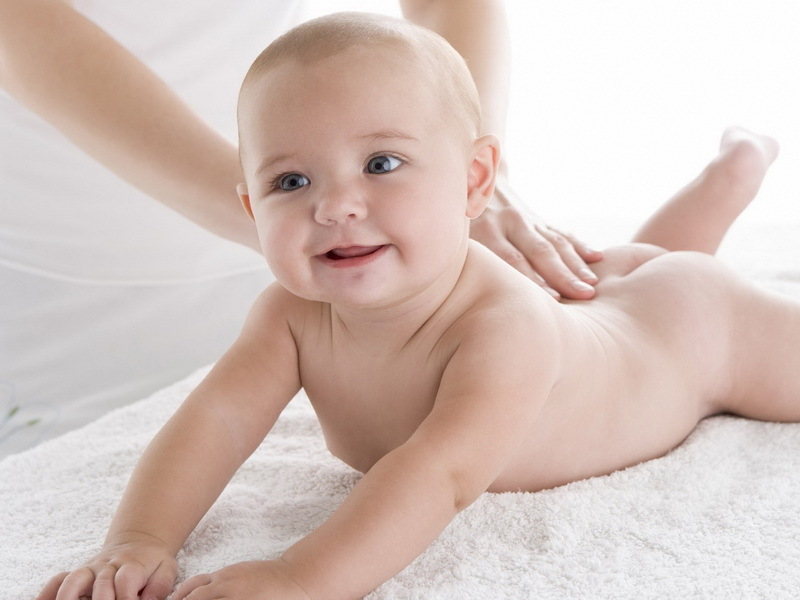 Even if the treatment was successful, the child with a diagnosis of hip dysplasia remains on the dispensary record with the orthopedic doctor for a long period - in some cases until the growth stops altogether.Experts recommend performing a control X-ray examination of the hip joints every 2 years.The child is imposed restrictions on physical activity, it is recommended to visit special orthopedic groups in preschool and school institutions.
Even if the treatment was successful, the child with a diagnosis of hip dysplasia remains on the dispensary record with the orthopedic doctor for a long period - in some cases until the growth stops altogether.Experts recommend performing a control X-ray examination of the hip joints every 2 years.The child is imposed restrictions on physical activity, it is recommended to visit special orthopedic groups in preschool and school institutions.
Hip dysplasia is quite a complicated disease, many parents literally panic when they hear such a verdict from doctors.But there is no reason for hysteria - modern medicine perfectly copes with pathology, timely treatment started and patience of parents make the forecasts quite favorable.
Comprehensive information on the signs of dysplasia of TBS, methods for diagnosing and treating dysplasia of TBS in children - in a video review by the pediatrician, Dr. Komarovsky:
Tsygankova Yana Aleksandrovna, medical reviewer, therapeutist of the highest qualification category.

